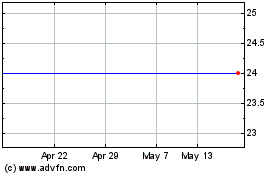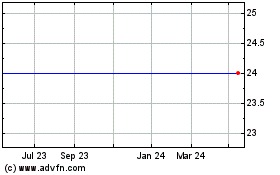CAT-152 results
November 14 2001 - 2:00AM
UK Regulatory
RNS Number:0806N
Cambridge Antibody Tech Group PLC
14 November 2001
01/CAT/21
FOR IMMEDIATE RELEASE
07.00 GMT, 02.00 EST Wednesday 14 November 2001
For Further Information Contact:
Cambridge Antibody Technology Weber Shandwick Square Mile (Europe)
Tel: +44 (0) 1763 263 233 Tel: +44 (0) 20 7601 1000
David Glover, Medical Director Kevin Smith
John Aston, Finance Director Graham Herring
Rowena Gardner, Head of Corporate
Communications
BMC Communications/The Trout Group
(USA)
Tel: 001 212 477 9007
Brad Miles, ext 17 (media)
Brandon Lewis, ext.15 (investors)
CAMBRIDGE ANTIBODY TECHNOLOGY ANNOUNCES SIX MONTH FOLLOW-UP RESULTS FOR
CAT-152
Follow-up results presented at major ophthalmology congress
Melbourn, UK... Cambridge Antibody Technology (LSE: CAT; NASDAQ: CATG) today
announces the six month follow-up results from a Phase II clinical trial using
CAT-152 (lerdelimumab; human anti-TGFb 2 monoclonal antibody) in patients
undergoing surgery for glaucoma and cataract. CAT-152 has been designed to
prevent excessive post-operative scarring which is the major reason why
glaucoma surgery can fail to lower intraocular pressure in the long term.
The trial results will be presented today at the American Academy of
Ophthalmology in New Orleans by consultant ophthalmic surgeon Dr David
Broadway.
The Phase II clinical trial studied 56 patients who were undergoing combined
glaucoma and cataract surgery. Patients were randomised to receive either
CAT-152 (36 patients) or matching placebo (20 patients) in a series of four
subconjunctival injections which were given on the day of surgery (both
immediately pre and post-operatively), the day after surgery and a week after
surgery. The primary objective of the trial was to assess safety and
tolerability of CAT-152 injection in this group of patients. A secondary
objective was exploration of efficacy of CAT-152.
As previously reported in August (three month data), CAT-152 was found to be
safe and well tolerated in this trial with no serious drug-related adverse
events and no severe injection site reactions reported. There was no evidence
of increased inflammation in the anterior chamber of the eye.
Intraocular pressure (IOP) was successfully lowered by surgery in both patient
groups. Six months after operation the achieved IOP was lower in patients
receiving CAT-152 (mean value 14.5 mmHg) compared to those receiving placebo
(mean value 16.7 mmHg). The proportion of patients achieving IOP below 22mmHg
was: CAT-152 100%, placebo 80%; (p = 0.013). At lower IOP thresholds a similar
trend was seen (less than 18 mmHg: CAT-152 83%, placebo 65%; less than 15mmHg:
CAT-152 50%, placebo 30%). In the early post-operative period intervention
with 5FU injection was used in 10 of 36 (28%) CAT-152 treated patients
compared to 2 of 20 (10%) on placebo.
By six months after surgery resumption of long term topical IOP lowering
medication was needed in 3 of 36 (8%) CAT-152 treated patients compared to 3
of 20 (15%) on placebo. One of these three placebo patients subsequently
underwent repeat trabeculectomy to control IOP.
Commenting on the results, Dr David Glover, CAT's Medical Director said, "Six
months after operation we can see a clearer trend towards a better long-term
outcome in those patients treated with CAT-152 than was apparent in the three
month follow-up results, highlighting the importance of long-term follow-up
after surgery for glaucoma.We were particularly pleased that these trial
results are being presented at the highly prestigious American Academy of
Ophthalmology today"
-ENDS-
Notes to Editors:
Glaucoma and Glaucoma Surgery
Glaucoma is the name for a group of eye conditions in which the optic nerve is
damaged at the point where it leaves the eye. The main cause of this damage is
raised pressure inside the eye (intraocular pressure, IOP).
Glaucoma affects 2% of people aged over 40 years, and the percentage of people
affected rises with age such that 5% of over 65's are affected, rising to
around 8% of over 75's.
Glaucoma is a major source of blindness. Treatment is generally aimed at
lowering the pressure in the eye to prevent long term damage to eyesight. Eye
drops are the mainstay of treatment but more than 10% of patients require
surgery to control pressure.
Trabeculectomy is the most commonly performed surgical operation for glaucoma.
Surgery lowers IOP by improving the drainage of fluid in the eye.
Scarring is the main cause of failure of surgery for glaucoma. There are no
approved treatments to prevent this scarring. CAT has estimated that up to
250,000 patients undergoing operations in the US and Western Europe each year
could benefit from treatment with CAT-152.
Quite commonly surgeons will combine surgery for glaucoma with a cataract
extraction and intraocular lens implantation. Both glaucoma and cataract are
conditions that increase in prevalence with increasing age hence they may
co-exist in elderly patients.
Patients are generally classified as failures of surgery if there is a need to
resume topical medication and/or further surgery is required. Attainment of
IOP levels such as 22mmHg or18mmHg are widely used.
CAT-152
CAT-152 is a fully human anti-TGFb 2 monoclonal antibody developed by CAT to
specifically neutralise the cytokine TGFb 2, overactivity of which is believed
to cause scarring in and around the eye. CAT-152 is being developed as a
treatment to prevent scarring in the eye following glaucoma surgery.
Two year follow up results from a phase I/IIa clinical trial in 24 patients
undergoing simple glaucoma surgery released in April 2001 showed that the
group of patients treated with CAT-152 at the time of surgery achieved
significantly lower intraocular pressure (IOP) than those treated with
placebo. Mean values two years after surgery were 13.6mmHg (CAT-152) compared
to 17.7mmHg (placebo) (p= 0.004). The pressure difference was apparent despite
clear trends for less use of post operative injections and less use of topical
medication in the CAT-152 group. The results were presented at the Association
for Research in Vision in Ophthalmology (ARVO) 2001 conference in Fort
Lauderdale, Florida, USA.
Three month follow-up results of a Phase II clinical trial using CAT-152 in
combined cataract and glaucoma surgery were announced 22 August 2001 (see news
release 01/CAT/15).
Efficacy
Efficacy is measured in terms of reduced need for intervention post surgery,
or in terms of lower IOP.
Cambridge Antibody Technology (CAT)
CAT is a UK biotechnology company using its proprietary technologies in human
monoclonal antibodies for drug discovery and drug development. Based near
Cambridge, England, CAT currently employs around 250 people.
CAT is listed on the London Stock Exchange and on NASDAQ since June 2001. CAT
raised #41m in its IPO in March 1997 and #93m in a secondary offering in March
2000.
CAT has an advanced platform technology for rapidly isolating human monoclonal
antibodies using phage display systems. CAT has extensive phage antibody
libraries, currently incorporating more than 100 billion distinct antibodies.
These libraries form the basis for the Company's strategy to develop a
portfolio of antibody-based drugs and to utilise antibodies as tools for
target validation. Six human therapeutic antibodies developed by CAT are at
various stages of clinical trials.
CAT has alliances with a large number of biotechnology and pharmaceutical
companies to discover develop and commercialise human monoclonal
antibody-based products. CAT has also licensed its proprietary human phage
antibody libraries to several companies for target validation and drug
discovery. CAT's partners include: Eli Lilly, Pfizer, Abbott , Genetics
Institute, Wyeth-Ayerst, Human Genome Sciences, Pharmacia, Oxford
GlycoSciences, Genzyme, Immunex, Zyomyx, Elan, Merck & Co and Xerion.
Application of the Safe Harbor of the Private Securities Litigation Reform Act
of 1995: This press release contains statements about Cambridge Antibody
Technology Group plc ("CAT") that are forward looking statements. All
statements other than statements of historical facts included in this press
release may be forward looking statements within the meaning of Section 21E of
the Securities Exchange Act of 1934.
These forward looking statements are based on numerous assumptions regarding
CAT's present and future business strategies and the environment in which CAT
will operate in the future. Certain factors that could cause CAT's actual
results, performance or achievements to differ materially from those in the
forward looking statements include: market conditions, CAT's ability to enter
into and maintain collaborative arrangements, success of product candidates in
clinical trials, regulatory developments and competition.
Catco Reinsurance Opport... (LSE:CAT)
Historical Stock Chart
From Jun 2024 to Jul 2024

Catco Reinsurance Opport... (LSE:CAT)
Historical Stock Chart
From Jul 2023 to Jul 2024
